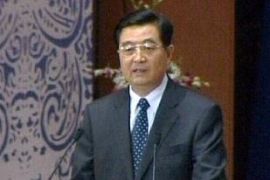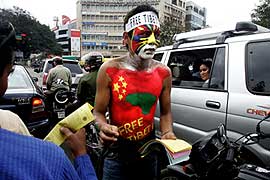China’s president begins India trip
Beijing and New Delhi looking to bridge differences and boost trade.

Even so, economic ties between the two countries have grown rapidly in recent years and two-way trade is projected to reach $20 billion this year, up from next to nothing two decades ago.
The two countries already have a deal to work together to secure energy supplies. There is now talk of exploring a free trade pact.
Hu is expected to touch on these issues when he meets Manmohan Singh, the Indian prime minister, on Tuesday.
He will also visit Mumbai, India’s financial capital, for a meeting with business leaders.
Hotline proposal
One senior Indian official said India and China may use Hu’s visit to announce the establishment of a hotline between the countries, “possibly at the level of foreign ministers”, to deepen trust between them.
|
“[We hope to] increase the investment between China and India” Senior Indian official |
They will also sign a 10-year agreement to “increase the investment between China and India”, the official said.
But the Indian official said China would be unlikely to allow private firms from India to invest in Tibet, while New Delhi would bar Chinese firms that had invested in Pakistan from operating in India.
On Monday, more than 1,000 Tibetans, led by Buddhist monks in maroon and yellow robes, held a protest march in New Delhi hours before Hu’s arrival.
The protesters, their faces painted in the colours of their flag, trampled the red Chinese flag under foot demanding freedom for Tibet and chanted anti-China slogans.
Border war
Political irritants in relations are rooted in the 1962 Sino-Indian border war.
 |
|
Tibetan exiles protesting on Monday in |
A formal ceasefire line is yet to be established, but the unsettled frontier has remained largely peaceful, thanks to agreements signed in 1993 and 1996.
The sticking points show that despite improved relations between the world’s nations, “anxieties and wariness” remain, says Uday Bhaskar from the New Delhi-based Institute of Defence Studies and Analyses.
He says India and China have still not resolved their border dispute, despite several rounds of talks and the opening of a trade post this year at Nathu La in the Indian state of Sikkim, closed after the 1962 war.
Never the less, as Dingli Shen of Shanghai’s Fudan University wrote in the Indian weekly Outlook about the potential benefits of a trusting relationship: “When 1.3 billion people can get along with one billion in Asia, the world is bound to be more peaceful, and also hopeful.”